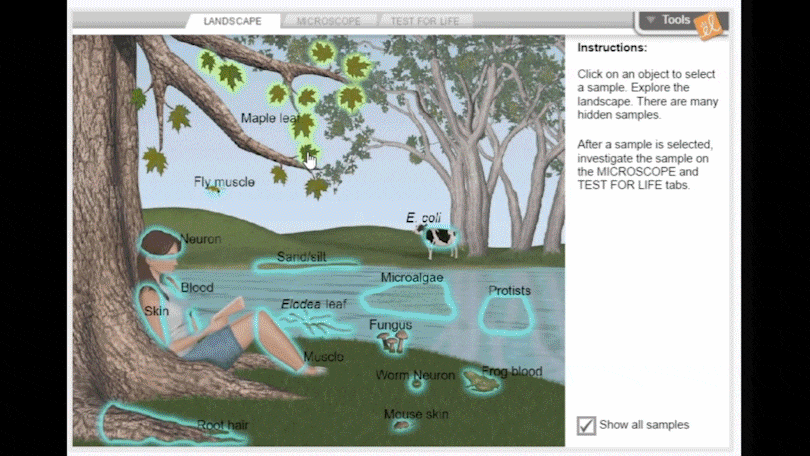
在计算机模拟“,”老师rs created games and other activities to show students real-life situations that they couldn’t experience in a classroom. Whether too dangerous, costly, impossible to actually witness, or all of the above, simulations of one sort or another taught students about cell structure, nuclear decay, planetary motion, evolution, and more.
With today’s virtual lab simulations, the goal is the same: to allow students to explore and develop an understanding of STEM concepts that would be difficult to observe or simulate in real life. And that, of course, is the main way most instructors use virtual labs in their classrooms:as in-class activities and virtual labs. In these instances, students drive the interaction with the simulation, engaging in experimentation and inquiry while developing conceptual understanding of the topic at hand. Students can simply “play and see what happens,” explore their own questions and theories, and work to answer the specific questions their teachers ask.
But there are other ways to use virtual science simulations likeExploreLearning Gizmosin your classroom. Let’s take a look at some of them.
- Demonstration. When simulations are used solely by the instructor, they can set the parameters of the “experiment,” and allow students to see only what they want them to see. Students can predict what they think will happen, discuss what actually happens, and offer theories and evidence.
- To learn scientific methods. Using virtual labs gives students a feel for what it means to think and work like a scientist. Through simulations, students learn about relationships among variables; how to predict and rationalize outcomes; and about probability, sampling theory, and how to understand and extrapolate data.
- As a bridge between in-class and remote learning. If the corona-virus pandemic showed us anything, it’s that schools today need to be ready to radically change their educational model on very short notice. And then change it again. And perhaps again. Virtual labs can help bridge the gaps and lessen the disruption caused by changing classroom situations. When in class, students can work in a traditional lab environment; during times of remote or hybrid learning, those same experiments can be run via simulation, allowing students to pick up where they left off.
- To differentiate instruction. Online simulations make it simple to plan lessons that are appropriately challenging – and rewarding – for every student in your classroom. Use simulations to assess students’ initial understandings, and then adapt them to fit their level. Lessons can be easily modified to provide extra practice and guidance for special education students. And for advanced students, you can assign them more advanced questions, and keep them engaged by letting them explore a simulation of their choosing. With virtual labs,differentiation is a breeze.
- Homework/proof of understanding. With online simulations, students only need an internet connection to learn.When used for homework, assignments utilizing simulations can be done on a student’s own time and at their own pace, allowing them to work through the topic’s concepts and theories in a way that works best for them. Students can also delve further into topics that interest or challenge them, again on their own time and at their own pace. Students can show their understanding of the work they did in a lab by expanding on it via digital simulations.
- Test Prep. Many virtual lab simulations are aligned to a variety of standards, including theNext Generation Science Standards. And when you chooseevidence-based simulations, you can feel confident your students will succeed on evaluation. But, along with preparing students for the questions that might be on an assessment, virtual simulations also prepare students for future test-taking environments . As computer-based assessments become the norm, questions are moving beyond traditional multiple-choice options and becoming more interactive. Students must do more than “provide an answer” or select vocabulary word definitions—they have to actually understand what the questions themselves require, and provide the evidence and reasoning needed to support their answers.
These assessments require students to be comfortable with the subject matter, yes, but also with the technology they will be using.Online simulations provide that experience.


ExploreLearning Gizmos are interactive online simulations and case studies for math and science that power inquiry and understanding through hands-on learning and experimentation.
世界杯决赛2022Pass it on!